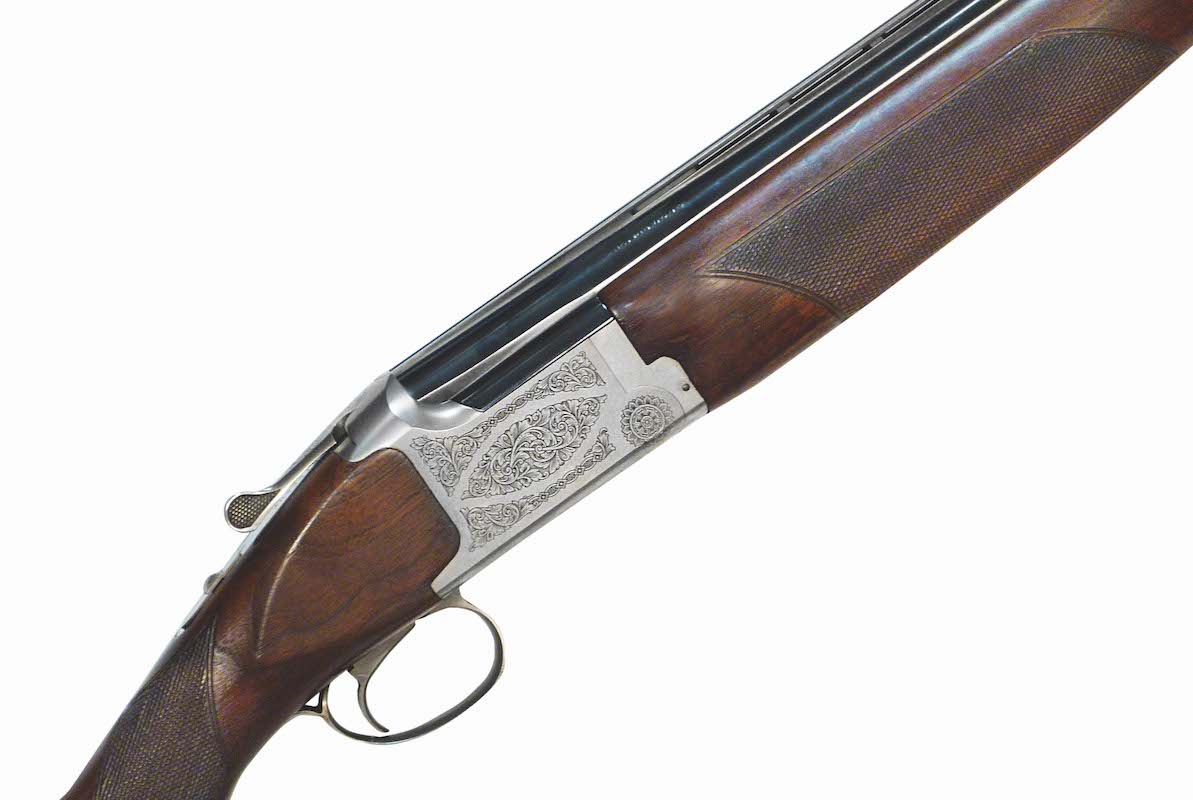Miroku MK70 shotgun: flexible enough for both field and clay use
Charles Smith-Jones looks at a Japanese shotgun that shares many features also found on Brownings

Many of Miroku’s products are manufactured on behalf of Browning with whom they have enjoyed a long and close relationship. Miroku guns were once regarded as little more than cheap Brownings, a rather unfair comparison although early Miroku shotguns were very close copies of Browning designs. There is nothing cheap or shoddy about them, and these early guns were so good that Browning soon came to an agreement with Miroku to produce firearms on their behalf. The Miroku MK70 is a good example of a new wave of shotguns that left the Miroku factory during the 1990s. Up until then barrels had been built on the principle of chopper lumps in which each barrel and lump was created from a single steel billet before being hard-soldered together to make up the completed barrel set.
This is the time-honoured method used by English gunmakers to make strong and reliable barrels, although it comes at an increased cost. For their new generation of guns Miroku invested heavily in new manufacturing equipment to make monobloc barrels. In this process the two barrel tubes are made separately before being forged into a separate breech block containing the lumps. The result is just as robust and reliable, but the process costs far less to complete. Despite this, the jointing is all but invisible, an impressive feature in a production gun.
Stands up well
Taking over from the venerable and highly respected 7000 model, the Miroku MK70 was an immediate success and is similar in many ways to the Browning B525 of the same era. It has broadly identical dimensions and handles just as well. The finish might come in a variety of grades but wood to metal fit is invariably excellent.
The engraving of the silvered action is variable but generally lightly executed. It is certainly attractive enough while clearly not hand finished, and it is something of a shame that a plain option was never offered as many shooters prefer it. Nevertheless the MK70 stands up very well against competitors in its class.
Sporter and field versions were made, but the relatively light weight of the sporter means that it would still work well as a game gun. Although some field models are fixed choke, the majority of guns came supplied with five flush-fitting multichoke tubes.
Lock up is solid thanks to a full-width bolt at the bottom of the action, and the sears are constructed to ensure a second bite on the hammers in the event of a knock or if the gun is dropped. This is an excellent and very sensible safety feature.

Miroku MK70
Neatly stacked
Mechanically, the MK70 is built to the tried and tested John Moses Browning design, which stacks components neatly and in logical order on top of each other and is derived from the proven Browning B25 action. The full-width cross pin, as opposed to stub pins, runs underneath the barrels and as a result the action is quite deep, which can affect handling compared to other shallower guns. In common with most Miroku and Browning models, the forcing cones are relatively short with somewhat tight bores.
The side ribs of barrels are solid while top ribs are ventilated – those of the sporter version are 10mm while the field models are smaller at 6mm.
A 3mm white foresight came fitted to factory guns, though in many cases these might have been lost or deliberately replaced over the years. The bores of all models have an interior chrome plating.
Spares are readily available for these Miroku MK70 shotguns and the sensible design ensures that any necessary work is easily completed by a competent gunsmith. There may be other similar guns available in the price bracket, but few represent the build quality of this robust, well-finished and proven model.
It might just be the perfect choice for anyone looking for a gun flexible enough for both field and clay use.

The wood is sometimes plain on the less expensive models
Miroku MK70 – tech specs
- Configuration: Over-and-under
- Action: Boxlock
- Choke: Multichoke
- Chamber: 2¾in (Sporter version) or 3in (Field)
- Barrel length: 28-32in
- Ejector/non-ejector: Ejector
- Safety catch: Manual or auto depending on model
- Weight: (12-bore) 7lb 12oz (Sporter version), 7lb (Field)
- Available in calibres: 12 or 20-bore
- Cost new: N/A
- Cost used: Expect to pay anything between £600 and over £2,000 depending on model and condition
How to tell the age of a Miroku MK70
Find the serial number on the barrel and then the two letters which follow it. These letters form a date code.
It works like this: Z=1, Y=2, X=3, W=4, V=5, T=6, R=7, P=8, N=9 and M=0.
Thus, for instance, a gun with a serial number ending NT would have been made in 1996.
This review was originally published in 2007 and has been updated.
Verdict
It might just be the perfect choice for anyone looking for a gun flexible enough for both field and clay use.








